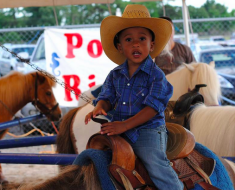Line for Easter Egg Roll at the White House
A video has gone viral depicting a boy mouthing the words “fake news” behind a CNN broadcaster in a live on-air segment (video below).
The boy appears to be a guest at the annual White House Easter Egg Roll April 17, hosted by the First Family on the White House Lawn.
The video, which first appeared on CNN as part of a live television show, has been redistributed by several outlets. The boy can be seen mouthing “fake news” in the background of the live shot, in addition to making an ‘X’ with his arms, a gesture popularized by Dallas Cowboys’ wide receiver Dez Bryant.
CNN and other mainstream media outlets have been labeled “fake news” by President Donald Trump, and the term has become a flashpoint for reporters and journalists. The term was popularized in society during the 2016 presidential campaign, when Trump would often generalize unflattering stories or reports as “fake.” He often did not dispute particular facts.
In many instances during the campaign, however, some news was genuinely and intentionally wrong or misleading. In an interview with the New York Times, Paul Mihailidis, a director of a graduate program at Emerson College, describes how proliferation of fake news reached a peak during the presidential campaign.
“Citizens engage with like-minded views more and more, and they feel secure in posting their thoughts and having a lot of reinforcement. This election was very heated, and citizens in these networks felt empowered to participate,” said Mihailidis.
“It became designing and sharing things that they didn’t really care were credible.”
Mihailidis also described a phenomenon in which readers often do not seek to understand a particular article, but rather base assumptions and form opinions solely after reading only the headline.
“Media literacy has often been apolitical,” he said. “It was about the text and that was it: Can you tell me the sources? Can you tell me something about its accuracy? What’s missing?”
Now, he says things have changed. He urges his students to focus on their engagement in the conversation as a whole, and examine whether or not what they’re reading is thoroughly researched. He also notes that his students understand how media can be influenced and manipulated by politicians.
According to a Gallup Poll conducted in September 2016, just 21 percent of the American public trusts newspapers and TV news. Lowest was Congress at 9 percent, and highest was the military at 73 percent, according to Axios.
Sources: New York Times, Daily Caller, Axios / Photo credit: Amanda Hirsch/Flickr






